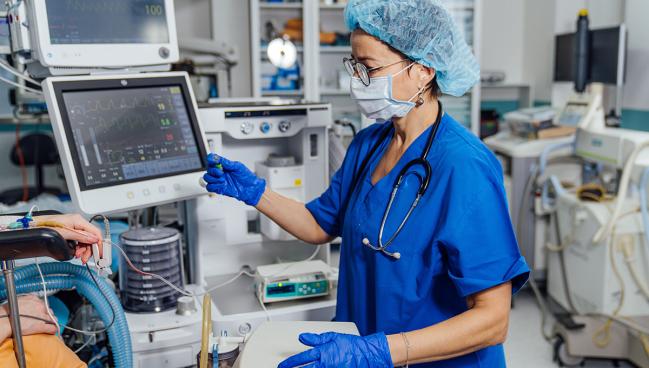AI in the ICU: Algorithm Aims to Guide Glucose Control After Cardiac Surgery
The GLUCOSE model recommends insulin doses that are tailored to each patient’s blood-sugar fluctuations.

For patients recovering after cardiac surgery, a new algorithm based on artificial intelligence (AI) could streamline the process of tracking shifts in glucose and adjusting insulin accordingly, researchers say.
The reinforcement-learning model, known as GLUCOSE, is designed to recommend insulin doses tailored to each patient’s needs with the hope of avoiding unnecessary complications. For example, hyperglycemia in this setting has been shown to raise the risks of infection, kidney injury, arrhythmia, and death, among other hazards, in a dose-dependent fashion.
With current protocols, which “often fail to account for individual patient variability in real-world settings,” just 15% of patients maintain optimal glucose levels in the first day after cardiac surgery, Jacob M. Desman, MS (Icahn School of Medicine at Mount Sinai), colleagues note in their paper, which was published online recently in npj | digital medicine.
The immediate postop period is “a very critical time for patients, when they are already very sick from a major, major surgery, and there are just too many things going on with them, which is why . . . their glucose level goes out of control,” senior investigator Ankit Sakhuja, MBBS (Icahn School of Medicine at Mount Sinai, New York, NY), told TCTMD.
Early on, “the patient’s condition changes hour by hour and sometimes minute by minute,” he continued. “This is a very dynamic period, and keeping up with that becomes very challenging.” Today’s protocols for glucose control tend to be institution specific, he pointed out, but this algorithm produces advice that is patient specific.
“What our focus has been on has been moving artificial intelligence from prediction to prescription, towards actionable AI,” Sakhuja explained. He predicted that the tool will both improve outcomes and lower costs of care.
‘Actionable’ AI
The GLUCOSE (Glucose Level Understanding and Control Optimized for Safety and Efficacy) model is based on 6,148 ICU patients (mean age 67.8 years; 71.1% male) from the MIMIC-IV database who’d undergone cardiac surgery. Researchers also externally validated the model in 920 similar patients (67.0 years; 67.2% male) from the eICU-CRD database.
At least one hypoglycemic event (glucose < 70 mg/dL) occurred in 7.6% and 7.2%, respectively, of the two cohorts. At least one hyperglycemic event (> 180 mg/dL) occurred in 47.8% and 47.3%.
Insulin doses from clinicians were identical to those recommended by GLUCOSE 27.3% and 20.3% of the time, respectively, in the internal testing and external validation datasets. In both cohorts, patients who received insulin doses similar to those suggested by the algorithm had the highest average time with glucose levels falling within the desirable window of 70-180 mg/dL. Results were consistent across subgroups defined by sex, race, and diabetes status.
The researchers also did a multiphase clinician validation study that compared the model against decision-making by junior and senior intensivists, nurse practitioners, and endocrinologists. These analyses “found GLUCOSE’s performance as comparable to or exceeding that of senior clinicians in mean absolute error, safety, effectiveness, and acceptability” of insulin dosing, they say, with the largest disagreement occurring around glucose values of approximately 140 mg/dL.
Having validated their model, “the next step is to deploy [GLUCOSE] in real time and see what happens” when the algorithm is put to use, said Sakhuja. “This is where so far there has been a huge void with artificial intelligence in healthcare—we develop a lot of great-performing models, but they don’t see the light of day.”
Caitlin E. Cox is News Editor of TCTMD and Associate Director, Editorial Content at the Cardiovascular Research Foundation. She produces the…
Read Full BioSources
Desman JM, Hong Z-W, Sabounchi M, et al. A distributional reinforcement learning model for optimal glucose control after cardiac surgery. npj Digit Med. 2025;8:313.
Disclosures
- GLUCOSE is the subject of a provisional patent application filed with the United States Patents and Trademarks Office, in which Desman, Sakhuja, and co-author Girish Nadkarni are named as inventors.





Comments